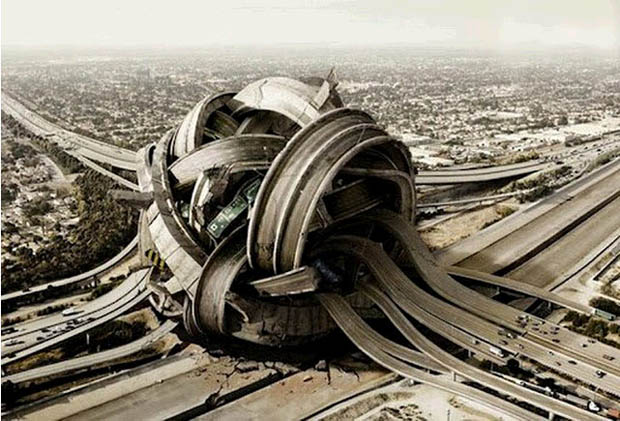
It’s long been a commonplace that cities are engines of economic and social development. Spatial proximity is synergistic – it provides economies of scale that extend well beyond a single firm or household.
However the “spillover” benefits of living side by side come at a price – the costs are also amplified by proximity. Cities produce negative externalities like noise, odour, violence and congestion.
As cities get bigger the benefits increase but the problems get worse. And Australia’s largest cities are getting bigger. For example, Melbourne is projected to grow from a current population of 4.1 million to 6.5 million in 2051.
So it’s disastrous that governments in Australia seem to be falling further and further behind in providing the sort of infrastructure and policies that’re necessary to support large and growing agglomerations of people and activity.
Consider this simple example. The railway level crossing on Melbourne’s Springvale Rd is currently closed 40% of the time during the two-hour morning peak. At the Mitcham Rd level crossing, the boom gates are down 45% of the time in the peak, sometimes for up to 7 minutes (more on level crossings here).
These sorts of inefficiencies limit the number of trains that can be run and hence constrain passenger capacity. They also delay buses, trucks and cars, thereby adding to travel costs.
Government involvement should be getting bigger as our cities get bigger! As Arnold Kling says, urban growth actually increases the demand for government.
When people are crowded together, many more externalities are created. Water and sewage management become a huge deal. So does planning a road and transportation system.
Governments should be spending more on infrastructure and taking action, like imposing taxes and regulations, to deal with externalities. Yet if we take this week’s Victorian State budget as an example, there’s little sign politicians are committed to managing big and growing cities like Melbourne effectively.
The Baillieu Government’s priority is balancing the budget (nothing unusual about that in the current political climate – the Gillard Government’s imminent budget will surely do the same). Apart from studies, the Victorian Government is funding precious few new major city-building initiatives.
The key new passenger transport projects are elimination of 3 of Melbourne’s 172 railway level crossings (that’s just 1.7 %!) and provision of 2.5 km of high frequency bus service from Huntingdale station to Monash University. These are good initiatives but too few by far. On the other side of the ledger, funding for cycling went backwards.
Making a city like Melbourne function effectively with a growing population requires government to think on a much grander scale. Government needs to get bigger and throw that weight around.
It’s as if Australian politicians don’t get that Sydney and Melbourne aren’t country towns anymore, when actually they’re now big cities by western standards. There are, for example, only 11 cities in the US (the third most populous country in the world) that have more residents than our two largest metropolitan areas.
‘Big’ government doesn’t just mean massive increases in expenditure on urban infrastructure and the associated hard decisions about where the revenue comes from, although both are necessary. And sooner or later both will be inevitable.
It also means more interventionist government, particularly using taxing and regulatory powers to change behaviours e.g. pricing road and parking space and/or using tax incentives to encourage more efficient vehicles or to bring forth more land for development.







Crikey is committed to hosting lively discussions. Help us keep the conversation useful, interesting and welcoming. We aim to publish comments quickly in the interest of promoting robust conversation, but we’re a small team and we deploy filters to protect against legal risk. Occasionally your comment may be held up while we review, but we’re working as fast as we can to keep the conversation rolling.
The Crikey comment section is members-only content. Please subscribe to leave a comment.
The Crikey comment section is members-only content. Please login to leave a comment.